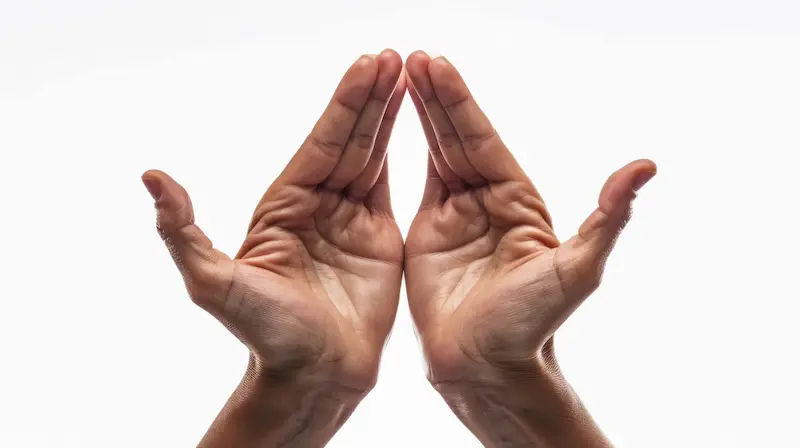Vrikshasana (Tree Pose) Benefits, Steps, and Precautions
Learn vrikshasana benefits, safe steps, and precautions. This yoga balance pose builds stability, focus, and fitness. Clear tips for beginners.

Written by Dr. J T Hema Pratima
Reviewed by Dr. Dhankecha Mayank Dineshbhai MBBS
Last updated on 16th Nov, 2025
%20Benefits,%20Steps,%20and%20Precautions.webp?tr=q-80,f-webp,w-350,dpr-2,c-at_max 700w)
Introduction
Feeling steady on your feet is essential for everyday life—from climbing stairs to carrying groceries. Vrikshasana, or Tree Pose, is a classic yoga balance pose that can help you build stability, body awareness, and calm focus. Practised regularly, it supports overall fitness and can complement your strength, flexibility, and aerobic routines. Below, you’ll find clear, safe steps, vrikshasana benefits, and sensible precautions based on guidance from reputable health organisations.
What is Vrikshasana (Tree Pose)?
Vrikshasana is a standing yoga posture where you balance on one leg while placing the sole of the other foot on your standing leg (typically on the inner calf or inner thigh), and your hands come together at the chest or reach overhead. It is accessible to beginners with simple modifications and can be made more challenging as your balance improves.
Vrikshasana Benefits: Why This Yoga Balance Pose Matters
While individual results vary, research and public health guidance support the value of balance and mind–body practices like yoga as part of a well-rounded fitness plan.
Benefits include:
• Builds balance and stability: Standing on one leg trains your ankles, legs, hips, and core to work together, which can help you feel steadier in daily activities.
• Supports posture and joint alignment: Practising upright alignment and even weight distribution can promote better posture habits.
• Enhances body awareness (proprioception): Learning where your body is in space helps coordination and can make other movements feel more controlled.
• Encourages focus and stress relief: Coordinating breath with movement in yoga is often used to calm the nervous system and ease tension, which may help you concentrate and feel more relaxed.
• Complements fall-prevention efforts: For older adults, adding balance exercises several days a week is recommended by public health organisations. Tree Pose can be one way to include balance work within a broader program that also builds strength and endurance.
Step-by-Step: How to Do Vrikshasana Safely
Use a wall or sturdy chair for support when needed. Practice on a flat, non-slip surface.
1) Set Your Stance
• Stand tall with feet hip-width apart.
• Distribute weight evenly across the standing foot (heel, big toe mound, little toe mound).
• Engage your core gently and lengthen through the spine.
2) Position Your Foot
• Shift weight to your left foot.
• Bend your right knee and place the right foot on one of these safe options:
o Beginner: Toes on the floor, heel resting lightly against the inner left ankle (kickstand).
o Moderate: Sole on the inner left calf (below the knee).
o Advanced: Sole on the inner left thigh (above the knee).
Important: Avoid pressing the foot directly against the knee joint.
3) Find Your Alignment
• Hips square and level, facing forward.
• Standing leg strong but not locked; keep a soft micro-bend in the knee.
• Press the foot and leg gently into each other if on calf or thigh to create steady engagement.
4) Place Your Arms
• Hands can stay on hips, at heart centre (palms together), or reach overhead with shoulders relaxed.
• Keep ribs aligned over hips—avoid leaning.
5) Use Your Gaze and Breath
• Fix your gaze on a still point at eye level to help balance.
• Breathe steadily and comfortably.
6) Hold and Switch Sides
• Maintain the pose as long as you can with good form, starting with a short hold and building up over time.
• Release with control and repeat on the other side.
Consult Top Specialists
Simple Variations for Different Fitness Levels
Here are the variations for different fitness levels:
• If you’re new to balance work:
o Stand close to a wall or hold a chair lightly.
o Keep toes on the floor (kickstand) while you practice steady breathing and posture.
• To progress safely:
o Bring your foot to the inner calf or inner thigh (never the knee).
o Try changing your arm positions (out to the sides, overhead) to increase challenge.
• For advanced balance:
o Reduce arm movement or vary gaze slightly.
o If experimenting with reducing visual input, stay near a support and proceed gradually.
Common Mistakes to Avoid
Here are some mistakes to avoid:
• Foot on the knee: Place your foot above or below the knee to protect the joint.
• Locked standing knee: Keep a gentle bend to avoid joint strain and improve balance.
• Dropping or hiking a hip: Keep hips level and facing forward.
• Holding your breath: Smooth, steady breathing supports balance and focus.
• Collapsing through the arch: Press evenly through the standing foot to maintain a stable base.
Precautions and Safety Tips
Tree Pose is generally safe for most people when practised mindfully. Keep these precautions in mind:
• Balance concerns: If you experience dizziness, vertigo, neuropathy, or unsteadiness, practice near a wall or chair and consider guidance from a qualified instructor or healthcare professional.
• Joint or soft-tissue issues: If you have foot, ankle, knee, or hip pain or a recent injury, modify the pose (e.g., kickstand variation) and avoid placing the foot on the knee. Stop if you feel sharp or persistent pain.
• Blood pressure or heart conditions: If you have cardiovascular concerns or uncontrolled blood pressure, talk to your healthcare provider before starting any new exercise program, including yoga.
• Pregnancy: Balance can change during pregnancy. Practice near a wall or use a chair for support. A prenatal yoga instructor or your healthcare provider can help you modify safely.
• Surface and footwear: Practice on a stable, non-slip surface. Yoga is typically done barefoot, but if you need shoes for stability, use supportive, non-slip footwear.
How Often Should You Practice Tree Pose?
Public health guidelines recommend adults aim for a mix of aerobic activity, strength training, and—for older adults—regular balance work. You can include Tree Pose in a brief daily routine, during your warm-up or cool-down, or as part of a yoga session. Older adults are encouraged to include balance activities on multiple days per week as part of a multicomponent fitness plan. Consistency matters more than duration—short, regular practice builds skills over time.
How Vrikshasana Supports Overall Fitness?
Here’s how vrikshasana supports overall fitness:
• Aerobic fitness: Pair yoga with brisk walking, cycling, swimming, or other moderate-to-vigorous activities to meet weekly aerobic goals.
• Strength: Include resistance exercises for major muscle groups on 2 or more days per week. Many yoga sequences also build strength, especially in the lower body and core.
• Flexibility and mobility: Yoga commonly includes gentle stretching and joint range-of-motion work, which can help you move more comfortably.
• Balance and coordination: Vrikshasana helps train single-leg stability. For older adults, combining balance, strength, and functional training is recommended to reduce fall risk.
Practical Ways to Add Tree Pose to Your Day
Here’s how to add tree pose to your day:
• Morning reset: Do 1–2 rounds per side after you wake up to tune your balance and posture.
• Work break: Stand up, focus your gaze, and take several calm breaths in Tree Pose to refresh mental focus.
• Post-walk cool-down: After a walk, add Tree Pose to build balance while your muscles are warm.
• Before sport or activities: Use a supported version to “wake up” foot and hip stabilisers.
Consult Top Specialists
Consult Top Specialists

Dr D M Karthik
General Practitioner
4 Years • MBBS, Fellowship in Diabetes Mellitus, Advance certificate in Diabetes Mellitus, Derma Nutrition Certification
Visakhapatnam
Apollo 24|7 Clinic - Andhra Pradesh, Visakhapatnam

Dr. Mohammed Kamran
General Practitioner
5 Years • MBBS, FIDM
Nashik
Apollo 24|7 Clinic - Maharashtra, Nashik

Dr. Swagata Sircar
General Physician/ Internal Medicine Specialist
8 Years • MBBS, MD General Medicine
Kolkata
HealthYou Speciality Clinic & Diagnostics., Kolkata

Dr. Divyashree K
General Physician/ Internal Medicine Specialist
5 Years • MBBS
Bengaluru
Apollo Clinic, JP nagar, Bengaluru

Dr Vvn Goutham
General Physician/ Internal Medicine Specialist
10 Years • MBBS, MD General Medicine
VIZAG
VITALS SPECIALITY HEALTH CLINICS, VIZAG
Consult Top Specialists

Dr D M Karthik
General Practitioner
4 Years • MBBS, Fellowship in Diabetes Mellitus, Advance certificate in Diabetes Mellitus, Derma Nutrition Certification
Visakhapatnam
Apollo 24|7 Clinic - Andhra Pradesh, Visakhapatnam

Dr. Mohammed Kamran
General Practitioner
5 Years • MBBS, FIDM
Nashik
Apollo 24|7 Clinic - Maharashtra, Nashik

Dr. Swagata Sircar
General Physician/ Internal Medicine Specialist
8 Years • MBBS, MD General Medicine
Kolkata
HealthYou Speciality Clinic & Diagnostics., Kolkata

Dr. Divyashree K
General Physician/ Internal Medicine Specialist
5 Years • MBBS
Bengaluru
Apollo Clinic, JP nagar, Bengaluru

Dr Vvn Goutham
General Physician/ Internal Medicine Specialist
10 Years • MBBS, MD General Medicine
VIZAG
VITALS SPECIALITY HEALTH CLINICS, VIZAG
More articles from General Medical Consultation
Frequently Asked Questions
1) Is Vrikshasana good for beginners?
Yes. Start with your toes on the floor (kickstand) and practice near a wall or chair. Focus on steady breathing and posture before progressing to placing your foot on the calf or thigh.
2) How long should I hold Tree Pose?
Hold as long as you can maintain good form and smooth breathing. Begin with short holds and gradually increase. Quality matters more than time—release before you wobble or tense up.
3) Which muscles does Tree Pose work?
Tree Pose engages the feet, ankles, calves, thighs, hips, and core to maintain stability, while the upper back and shoulders help with posture—especially when the arms are lifted.
4) Is Tree Pose safe during pregnancy?
Often, yes, with modifications. Because balance can change during pregnancy, practice near a wall or use a chair for support. If you have any concerns, consult your healthcare provider or a prenatal yoga teacher.
5) Can Vrikshasana help with knee pain?
If you have knee pain, avoid placing your foot on the knee joint and keep a gentle bend in the standing knee. Use a supported variation and stop if pain worsens. For ongoing knee issues, seek guidance from a healthcare professional or a qualified instructor.




